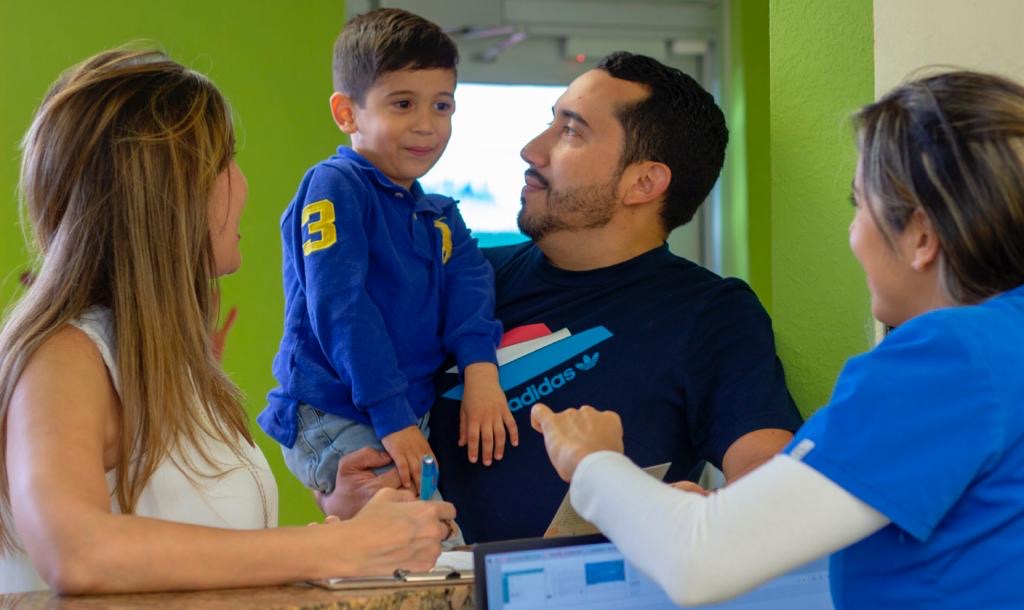
Parents play a vital role in the educational placement of their Superkiddos
Children who have different abilities that may interfere with their education, may receive accommodation consisting of individualized instruction and assistance to support their schooling process.
Students with different abilities are protected by federal laws that assure them they will receive a free and appropriate public education, and it is the obligation of public schools to provide them with this special assistance.
Lately, the IEP (Individualized Education Program) has been a constant subject of conversation among the parents of our center. They have multiple questions about it and we want to start helping clarifying them.
Let’s begin defining IEP
It is a written statement of the educational program covered by special education law or the Individuals with Disabilities Education Act (IDEA) designed to meet the individual needs of children who have 1 or more of the 13 conditions covered by IDEA, where ASD, dyslexia and ADHD are included.
It details what individual strengths and challenges make up the Superkiddos unique learning style.
For an IEP to be effective, it must contain 3 elements:
1- Describe academic performance of the kiddo, such as test results and grades. Also, behavioral characteristics, social skills, communication skills, learning styles, and development of sensory or motor skills.
2- Meaningful and measurable academic and functional objectives: they are essentially what drives the educational process. Each goal should include information about how and when progress towards it will be measured.
The IEP should make it very clear that any member of the team can monitor how well the child is doing in each goal area.
3- Information on recommended supports and services that the child requires at school, based on the objectives set. For example, special education programs and related services, such as speech therapy or psychological counseling.
Also, specific accommodations or modifications needed to support the kiddos’ education plan (testing modifications, class placement, services of interpretation, etc.).
NOTE: In the case of boys in middle school, information about Transition Services is also included.
The IEP team must develop a plan to support the youth in their adaption to adult life. Implementation of this plan should begin in the early to mid-teens so that the student is as prepared as possible for life after school ends.
But that is not all!
Most IEP forms also include:
- An explanation of the extent to which your child will be removed from his peers. This is to ensure your child is in the “least restrictive environment,” as mandated by IDEA.
- An explanation of your child’s exemption from statewide assessments and a list of alternative assessments that will be used, if applicable.
Now that you know what IEP is and what it contains, you must be awared of the importace that you as a parent get fully involved. Since it’s impossible to carry out an effective IEP without the parents.
Your presence is vital! But… why?
It’s the obligation of public schools to give students with unique abilities and special needs the help they require, and it is essential that parents are engaged and speak up for their children.
For your participation to be effective, you must be very knowledgeable about your rights and the special education process.
Parents have the right to participate as members of the team that determines the unique needs of their child, the placement of their child’s instruction, and the special education services that the school will provide.
As a parent you know your Superkiddo better than anyone else, and you can inform the rest of the group about his/her strengths and main needs, and also agree on the main goals that the child must achieve.
What can I demand as a parent in my child’s special education?
This is one of the most frequently asked questions.
Don’t worry! We’re going to brake it down to you:
Basically, parents can require that their children be in a classroom with a maximum number of peers. While they can also request specific accommodations needed for their child in the classroom.
There is more! The list expands to how much and what kind of support the child needs, for example:
- Transport
- Speech and language services
- Psychological or mental health support.
- Physical or occupational therapy
- Corrective services
- Artistic services, art therapy
- Music therapy or dance therapy
- After school or weekend services
- School social work services.
- Recreational support
Then another question arises:
Once the IEP takes place, can changes be made?
It’s important that you know that parents have the right to call an IEP meeting at any time if you think there is a problem that needs to be addressed.
Although IEP goals are generally written and updated annually at a meeting whose primary focus is the child’s development, it is always possible to update the IEP during the school year if needed. For example, if a goal has been met before the expected time or if it begins to require different support or adaptations.
So, nothing is written in stone and there is always room for flexibility when necessary.
What would always make a difference in the process and specially in the kiddo’s life is your presence.
Let’s not forget that the IEP is the backbone of this system, and we parents are the ones who make it happen.
Finally, we want to end this post with Big News:
The University of Miami and the Nova Southeastern University came together to create the Center for Autism and Related Disabilities (CARD) and it constantly holds free Virtual Meetings to support groups for family members and people close to children or adults with severe autism.
It is an opportunity to share experiences and continue learning in this particular, challenging and beautiful path that is autism.
If you want details about the upcoming virtual meetings they have, click here!
Need additional information?
Our professional team will be happy to help!
Together, we make it better! ✨